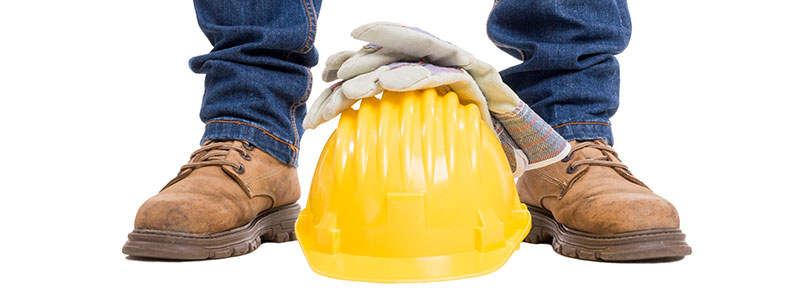Construction sites, bustling with the activity of nearly 11 million workers in the United States, are dynamic environments where worker safety takes precedence. While construction managers diligently access resources like those offered by the Associated General Contractors of America (AGC) to ensure safety measures for personnel, one often overlooked aspect integral to a secure construction site is the thoughtful deployment, maintenance, and use of construction equipment.
It is essential to recognize that injuries become less likely when the tools and vehicles on-site are well-maintained, tracked, and monitored. For construction equipment compliance experts, here are key considerations for sustaining a culture of safety and compliance in equipment management.
Tip #1: Ensuring Proper Training for Equipment Operators
In a constantly expanding construction industry, finding skilled vocational laborers can be a challenging task. The role of ensuring the safety and proficiency of equipment operators becomes even more vital. While many construction workers receive generalized training in heavy equipment operation before employment, there is a substantial difference between these broad lessons and the specialized knowledge accessible through manufacturers’ resources.
Construction site managers should collaborate with equipment vendors to develop custom curricula that focus on the tools they produce. Whether it involves instructional videos or hands-on demonstrations, it is crucial to familiarize operators with the manufacturer’s guidelines before they engage with the equipment.
In situations where this isn’t feasible, establishing mentorship programs, where experienced personnel guide less seasoned workers, can help ensure a smooth transition. Recognizing that the machinery on a construction site is far more complex and potentially perilous than assembling furniture, education remains a top priority for workers’ safety.
Using a vocational fleet management platform helps to pull all the elements of safe and effective fleet together on one pane of glass.
Tip #2: Prioritizing Preventative Maintenance
Construction site managers often juggle a multitude of responsibilities, from equipment procurement to maintenance and ensuring the safety of everyone on-site. To excel in this role, effective managers work to avoid or mitigate repairs and potential injuries proactively. Technology offers a valuable solution to streamline the recording and collection of inspection, compliance, and maintenance data, eliminating the need for time-consuming manual inspections.
The transition from paper-based inspections to electronic verification significantly reduces inspection processing time.
For instance, Zonar’s EVIR (Electronic Verified Inspection Reporting) automates tasks, such as service repair scheduling and report submissions, which were once carried out manually. Notably, fleets using Zonar’s EVIR system are seven times less likely to be placed out of service according to the Commercial Vehicle Safety Alliance’s International Roadcheck enforcement program. The adoption of this technology empowers site managers to simplify the inspection process, allowing them to allocate more time to critical safety and compliance aspects.
Tip #3: Harnessing the Power of Tracking Solutions
Theft of expensive construction equipment is an ongoing concern, and the National Equipment Register (NER) estimates that the annual value of stolen construction equipment ranges from $300 million to $1 billion, with most equipment never being recovered. Fences alone are often insufficient to deter theft.
The incorporation of reliable tracking tools that can withstand adverse weather and conditions is a simple yet effective method to protect valuable equipment investments. Advanced tracking solutions enable real-time monitoring of the location of tools and equipment with remarkable accuracy.
One example where Zonar’s tracking system came into play was with Hotline Construction, located in Southern California.
During the demo phase before contract renewal, three company trucks were stolen from three jobsites. Because web-based Ground Traffic Control is mobile friendly, Hot Line Construction’s fleet managers were able to track and recover each truck.
One truck was valued at $300,000 and had $100,000 worth of equipment on board. The thief who stole it was a member of a crime ring that regularly stole commercial vehicles and took them to chop shops.
As soon as the truck was stolen, fleet managers started tracking it online, and communicated its moment-by-moment location and heading to their crews, who worked with law enforcement. They set up a roadblock and caught the thief before the truck was lost forever.
Then the crew took their recovered truck and went back to work.
These tracking systems can be integrated into traffic control solutions, offering construction managers the ability to strategically direct workers and vehicles from various devices.
This comprehensive approach aids in reducing congestion, lowering the risk of equipment-related accidents, and facilitates the swift recovery of stolen equipment. Robust telematics systems that monitor every aspect of equipment operation, such as starts, stops, turns, and brakes, further enhance safety and compliance.
While the safety of personnel remains paramount on construction sites, construction equipment compliance experts should acknowledge the equally significant role of equipment safety and maintenance. Regardless of its function, machinery is safest when consistently monitored, strategically deployed, and operators are adequately trained in its proper usage. By committing to these principles, construction sites can ensure the well-being of their workers and the longevity of their equipment.







